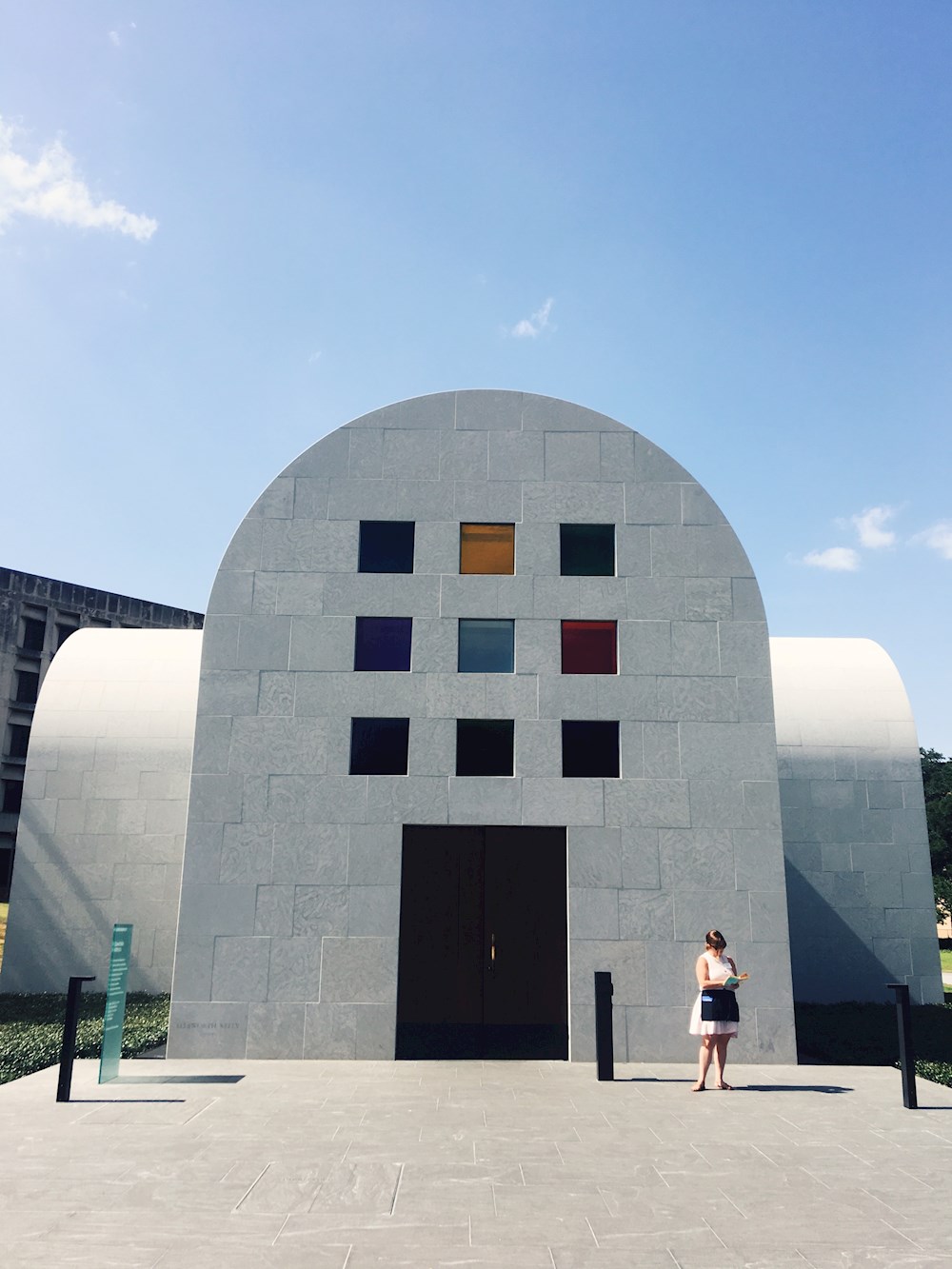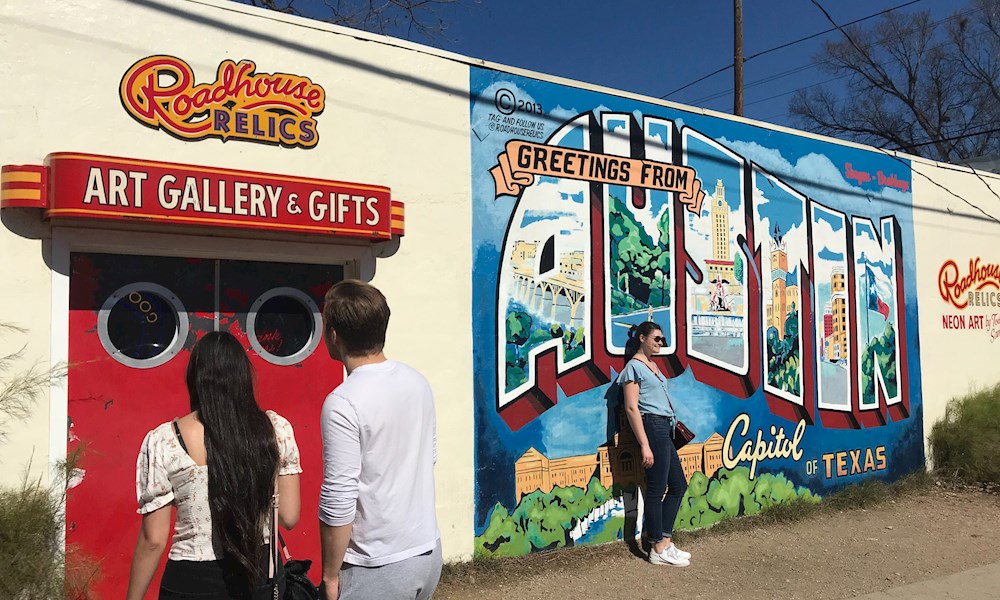- Sector Scan
Arts and Cultural Workforce of Austin, TX Sees Signifiant Growth from 2020 to 2022
- Posted Aug 03, 2023
5-minute read
While Austin-Round Rock-Georgetown, TX, may be well known for its music and filmmaking scenes, it also has a robust, multifaceted arts scene marked by a collaborative ethos that includes a cutting-edge theater community, a burgeoning visual arts scene, and emerging art/tech intersections. With this array of arts activity, it is no surprise that the city ranks within the top 2% of communities on Arts Providers, with particular strengths in arts, culture, and entertainment firms as well as arts and culture employees. In fact, Austin’s ranking among the number of arts and culture employees per capita experienced a significant jump in this year’s index compared to 2020.

Billed as the “Live Music Capital of the World,” Austin has more than 250 live venues that fill the city with music every night of the week and is a magnet for young musicians and their audiences. Austin is also a well-established festival town with long-running annual events such as Austin City Limits, South by Southwest (SXSW), Austin Film Festival, Fusebox Festival, Texas Book Festival, and cultural celebrations like Dia de los Muertos. While the music industry statewide was heavily impacted by shutdowns and closures during the height of the COVD-19 pandemic, recent research shows the economic impact of the music industry surpassed 2019 numbers. Austin continues to play a key role in music performance statewide, even as rising housing costs are causing some musicians and creatives to relocate to other nearby areas.
Austin’s arts and cultural community is also strong in other disciplines like theatre and visual arts. Austin’s experimental theater may be due in part to the widely regarded Michener Center for Writers at the University of Texas (UT), with its focus on playwriting and screenwriting, as well as innovative productions by the Rude Mechs collective, the artist-owned Vortex theater, and by Proyecto Teatro, which presents all programming entirely in Spanish. Museums like UT’s Blanton Museum of Art, one of the largest university art museums in the U.S., and The Contemporary Austin, Mexic-Arte Museum (the Official Mexican and Mexican American Museum in the Southwest), and the East Austin Studio Tour (E.A.S.T.), among others, have nurtured the rising visual arts scene. With its strength in technology, Austin has achieved the distinction of being the first (and only) city in the U.S. to receive a City of Media Arts designation within UNESCO’s Creative Cities Network.
Despite Austin being the 11th largest city in the nation, the majority of its arts organizations are small. This dynamism is no surprise given the high numbers of state and federal government grants, leading to a Government Support score in the top 4% of all cities. Among all large southern cities in this year’s report, Austin ranks highest when it comes to the inflow of state arts grants.
The Cultural Arts Division of the city’s Economic Development Department administers the Cultural Arts Fund, which receives revenue from the city’s Hotel, Occupancy Tax. Revenue from this tax was on the rise between 2010 and 2019, but the pandemic put a halt to that growth. Recently the tax revenues have started to rebound, which is good news for this key funding source for local arts and cultural organizations,
Austin is also home to several statewide arts organizations, making it a hub for arts leadership in the state. These organizations include the Texas Cultural Trust, Texans for the Arts, Texas Commission on the Arts, Center for Educator Development in the Fine Arts, and Texas Music Educators Association.

Just north of Austin lies the City of Round Rock, which has a vibrant arts and culture scene all its own. “We are often perceived as a suburb of Austin, but we are our own city, with visual and performing artists living here and creating here from all over the world,” said Christina Rudofsky from the City of Round Rock Arts and Culture. Round Rock itself includes 100+ small to mid-sized arts and cultural organizations and businesses, and is an official Music Friendly Community through the Texas Music Office. The city is also a hub for folklorico dance, thanks to the efforts of award-winning Round Rock Ballet Folklorico.
The City of Round Rock also has an Arts and Culture department, helping to centralize and share local information and opportunities. Among the many services offered is an annual arts grants program to support the city’s visual and performing arts nonprofits. Even prior to the pandemic, many of Round Rock’s local music and cultural events were held outdoors, which allowed for a cautious return to community connection and arts opportunities.. The city also added smaller outdoor events to their programming, such as a lunchtime concert series, for those who are more comfortable with smaller crowds.
The Austin-Round Rock-Georgetown arts sector is a captivating tapestry that weaves together creativity, culture, and community. This dynamic region has firmly established itself as a thriving hub for artistic expression within the state of Texas, fostering an environment where innovation flourishes and diverse voices are celebrated. One cannot overlook the influential role of festivals and events in shaping the arts and economic landscape of the region. The creative industry has become a vital contributor to the region's economy, attracting businesses, tourists, and a skilled workforce which has helped propel the city's growth and created a virtuous cycle that strengthens both the cultural and financial fabric of the community.
Thank you to Christina Rudofsky of City of Round Rock Arts and Culture for their thoughtful contributions to the making of this article.
ABOUT THE ARTS VIBRANCY INDEX
The Arts Vibrancy Index examines the level of supply, demand, and government support of the arts in more than 900 communities across the country. Accompanied by an interactive Arts Vibrancy Map that reveals the arts-vibrancy score of every county in the U.S., the Index lists, in alphabetical order, the 20 most arts-vibrant large cities, the 10 most arts-vibrant medium cities, and the 10 most arts-vibrant small cities. In this year’s Index, the first since 2020, four communities debut on the lists, and an additional five return after an absence of at least three years.



Comments
Leave yours below.